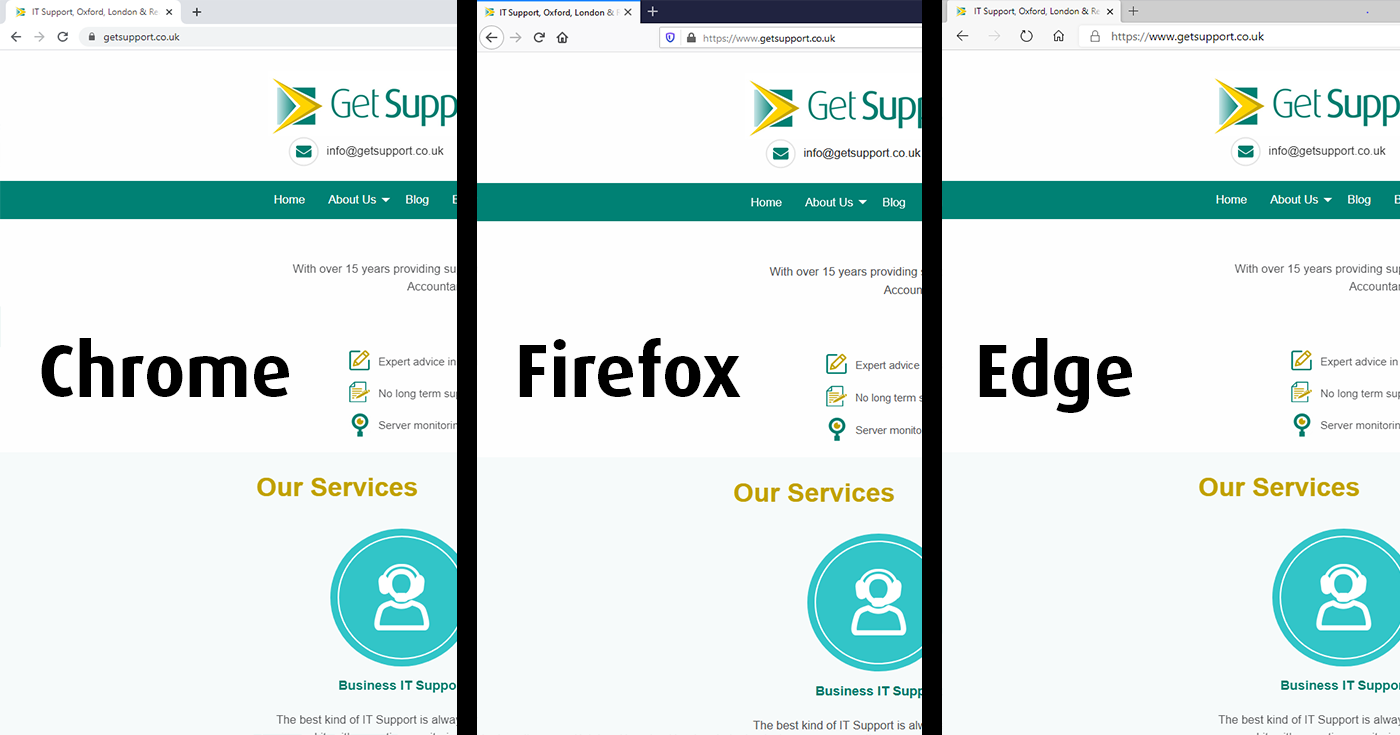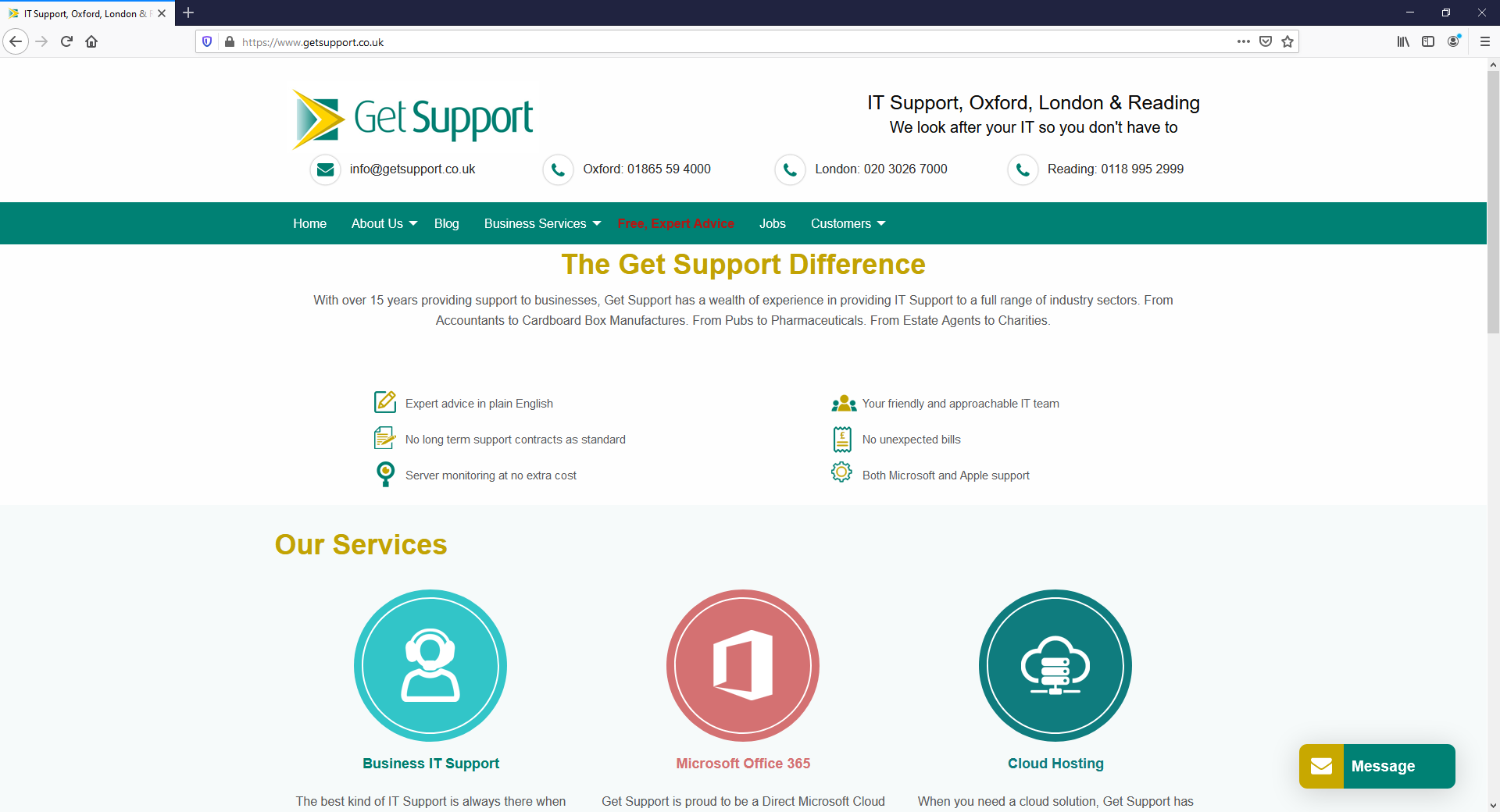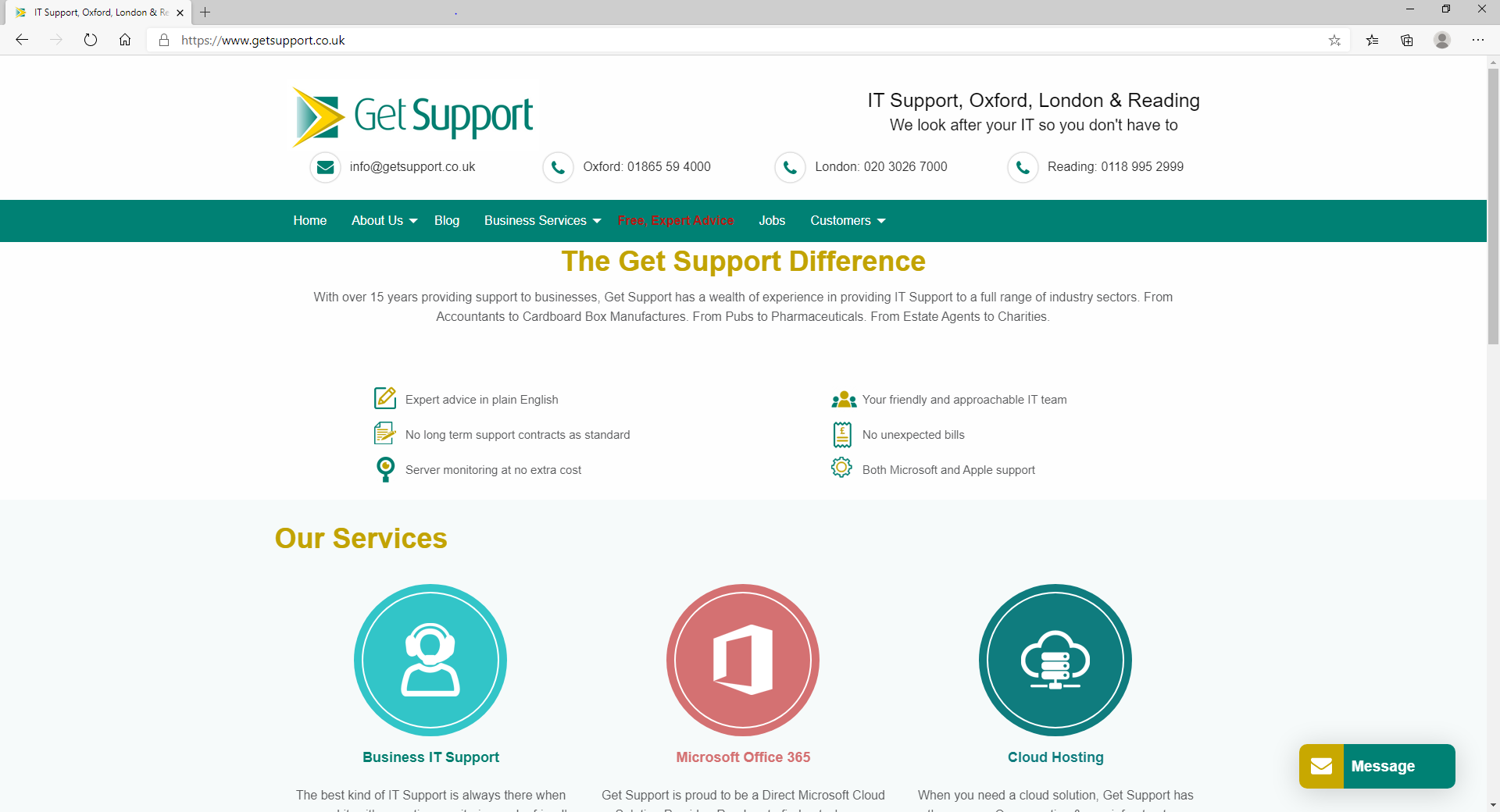
Executive Summary
- Web browsers are perhaps the most frequently used apps on any Windows or Mac computer, but many of us stick with what we know.
- In this guide, we’ll compare the security and key features of three of the most popular cross-platform web browsers: Google Chrome, Mozilla Firefox, and the latest version of Microsoft Edge.
Introduction
There are some things in life that are a bit more “set and forget” than others.
Bank current accounts are one example.
Energy providers are another.
But there’s one part of our lives which many of us don’t even really think about: our web browser. A lot of us simply use whichever browser was installed when we first got our computer or laptop, yet there’s more competition (and more feature-rich development) out there than ever.
So, could you be missing out on something great with a different browser?
In this ultimate web browser comparison, that’s what we’re going to find out.
The desktop web browser landscape in 2020
Before we dive into the direct comparison of three of the most popular web browsers, let’s first consider how browsers are being used today.
We’ll focus on desktop browsers here, as they’re most relevant to business users, but mobile is a whole different ballgame (which we might just cover in the future).
It’s easy to assume that whichever web browser you are using is the most popular option, but is that confirmation bias at work? Let’s look at the stats.
According to Statcounter, here’s the market share for desktop web browsers as of June 2020:
- Google Chrome is used by 69.2% of users.
- Mozilla Firefox is used by 9.36% of users.
- Safari (Mac only) is used by 8.08% of users.
- Microsoft Edge is used by 4.53% of users.
Now that you’re aware of how the world is managing their browser choice, let’s look at the most popular options in more depth. Just a quick note that we’ll focus on the core cross-platform browsers here (i.e. those that work on Windows and Mac) – so apologies to the Safari fans out there.
Google Chrome
Accounting for over two-thirds of the market for desktop web browsers, there’s no question that Chrome is the most popular web browser on the planet – but why?
Originally launched back in 2008, Chrome quickly became known as a lightweight alternative to Internet Explorer and Firefox. And while Chrome is still lightning-fast to launch on most machines, it can be quite resource-intensive – especially on system memory if you have a lot of tabs open at once.
Google Chrome is built on open source code known as ‘Chromium’, a Google project. Think of this as the engine which powers the browser. It’s so powerful that Chromium now forms the basis of other web browsers – including one we’ll look at here shortly.
Key features
- Full integration with Google’s search engine, meaning the ‘omnibox’ (a.k.a the address bar) can be used to search with suggestions and rich results.
- Offers login and sync to your Google account, meaning your settings and bookmarks can easily be migrated to a new device.
- Built-in password manager which will even check for compromised passwords.
- Auto update whenever new updates are available (about every six weeks).
- Google leverage technologies like site isolation, sandboxing, and predictive phishing for increased security.
- Option to enhance Chrome’s feature-set with third-party installable extensions.

Mozilla Firefox
Mozilla Firefox, usually referred to simply as ‘Firefox’, is actually one of the longest-standing web browsers.
First launched way back in 2002 as code-name ‘Phoenix’, Firefox has always been a free and open-source web browser, setting itself apart from commercial options at the time – like Microsoft’s Internet Explorer. When its first generally available version launched in November 2004, Firefox was downloaded 60 million times in just 9 months – quickly becoming a fierce competitor for Internet Explorer.
Firefox differentiates itself with a focus on security and privacy, especially around data-collecting trackers. It also includes features such as Firefox Monitor, which alerts users to their personal data being part of breaches.
Key features
- Advanced privacy, with protection against 2000 different trackers enabled by default when installing the browser.
- Built-in Protections Dashboard, which shows users a history of how the browser has protected them from tracking attempts.
- Password management via the Firefox Lockwise tool.
- Ever-growing collection of third-party browser extensions.

Microsoft Edge
No list of web browsers would be complete without mention of Microsoft, but it’s not the world-renowned Internet Explorer we’re covering here, but rather Microsoft Edge.
With under 5% of market share, it’s not a stretch to say that Edge has some catching up to do, but Microsoft are certainly trying. The initial version of Edge, now known as ‘Edge Legacy’, was released in 2015 alongside Windows 10. This version was built on Microsoft’s own underlying technology, but things changed in January 2020 when Microsoft released the ‘new’ Microsoft Edge, powered by – you guessed it – Chromium.
This change to the new infrastructure has made Microsoft Edge a faster, more lightweight browser – but whether it’s enough to bring in market share from the other dominant web browsers remains to be seen.
Key features
- The ability to log in to your Microsoft account to sync bookmarks and browsing data across devices.
- Fully featured Tracking Prevention with three different options: Basic, Balanced, or Strict.
- Due to the Chromium infrastructure, users can now install Google Chrome extensions on the latest version of Microsoft Edge.
- The Collections feature allows you to add images, text, videos, (or anything else you can drag and drop) to a collection. You can then send these collections to Word or Excel in a couple of clicks.

Want more expert IT advice for your business?
There you have it: the basics of the three most popular cross-platform browsers. But which one will you choose? The choice, as always, is entirely yours. But we do hope we’ve shed some light on the key differences to help make that choice a bit easier.
With the world becoming ever more digital by the day, it’s never been more important to stay on top of your IT. Whether it’s something small like web browser security or something huge, like full-blown networking infrastructure, the team here at Get Support can help.
Call us today on 01865 59 4000 for expert advice, always delivered in plain English.



